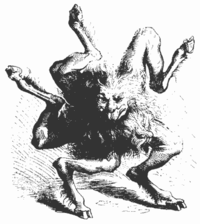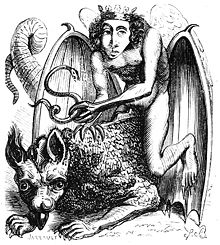
AMEN happens to be the evil demiurge that corrupted ALL scriptures on Earth with his total control agenda. Also spelt AMON or AMUN, the name itself means "The Hidden One" - the invisible "almighty god" mere humans are expected to believe in and worship as a matter of faith.
When Marduk (known as Ra in Egypt*) became dissatisfied with rulership of both Upper and Lower Egypt, he moved his operational base to Babylon where he began to plot his own rise to deific supremacy, while in Egypt he continued to be worshiped as AMEN RA (Ra the Unseen), making sure his priesthood was as corrupt and wicked as they come.

Marduk it was who systematically infiltrated all belief systems with his antisexual, antifeminine doctrines which gradually developed into the austere, humorless, warlike dogmas that are today the root cause of diseased patriarchal religions like Judaism, Christianity and Islam.
The Evil Priesthood of AMEN RA is at work in ALL faiths - and their task has ever been to subvert the individual's ability to reconnect with his or her own Inner Authority - causing the masses ultimately to seek false comfort in official dogma and established institutions.Naturally the AMEN priesthood is most influential in modern times disguised as Academia.

That's right, they have traded their priestly robes for professorial ones... and have effectively gained a monopoly on molding the psyches of the entire population through licensing and "legitimizing" all professions with their power to confer degrees and diplomas on those who meekly submit to their intellectual formatting.
Don't talk to me about AMEN. Raises my blood pressure! If you MUST say something utterly meaningless at the end of every prayer or invocation, why not stick with "So it is!" or "So be it!" If that sounds too pompous to you, just settle for "HYMEN" (at least you're paying tribute to the Blessed Virgin :-)

In Malaysia the Cult of Amen successfully disguised itself as the monoethnic, monolithic political party called Umno - sometimes called "Ameno" by its detractors. But beyond Umno, AMEN RA's deadly influence has spread throughout all levels of business and politics - and has co-opted all religious institutions, turning them into agencies of mind control. The unholy intention is to rigidify your thought processes.
 How can you tell when a belief system is basically Amenist?
How can you tell when a belief system is basically Amenist? Primarily, Amenism is anti-Nature and anti-Life - and this fear of organicity manifests as erotophobia, which regards human sexuality as sinful and therefore taboo unless sanctioned by the blessings of an Amen priest (or civil registrar).
AMEN RA regards himself as a "supernatural" being - and therefore has no love or respect for the natural environment. Ultimately, AMEN RA is obsessed with POWER OVER OTHERS - but, ironically, he has no power over his own irrational mood swings. When overcome by rage, AMEN RA literally goes berserk, runs amok, and transforms into the God of War, Moloch, who feeds on blood sacrifice. The Temple of Moloch on Earth is better known as The Pentagon.

When at peace, AMEN RA takes the form of Mammon, the God of Money, and it is this deity that rules the Barisan Nasional - and all those who mistake property for prosperity, money for true wealth, and brute force for power.
___
*
Or Murdoch in Mediaspeak? :-)
For more background on and insight into the psychic virus called AMEN, read Akhunaton the Extraterrestrial King by Daniel Blair Stewart (Frog Books, 1995).
[First posted 3 September 2008, reposted 10 October 2014]
















24 comments:
Are you an Egyptophile as well as Babylonopjhile. Wow!
http://donplaypuks.blogspot.com
refer my latest blog 'The Sept16th Chronicles' and 'Wine, How Divine' satire.
Visited Egypy in 2007. Most fantastic holiday of my life, esp Karnak & valley of Kings.
http://donplaypuks.blogspot.com
Can I say that the 'The Evil Priesthood of AMEN RA is at work in ALL Institutionalized Faiths'.